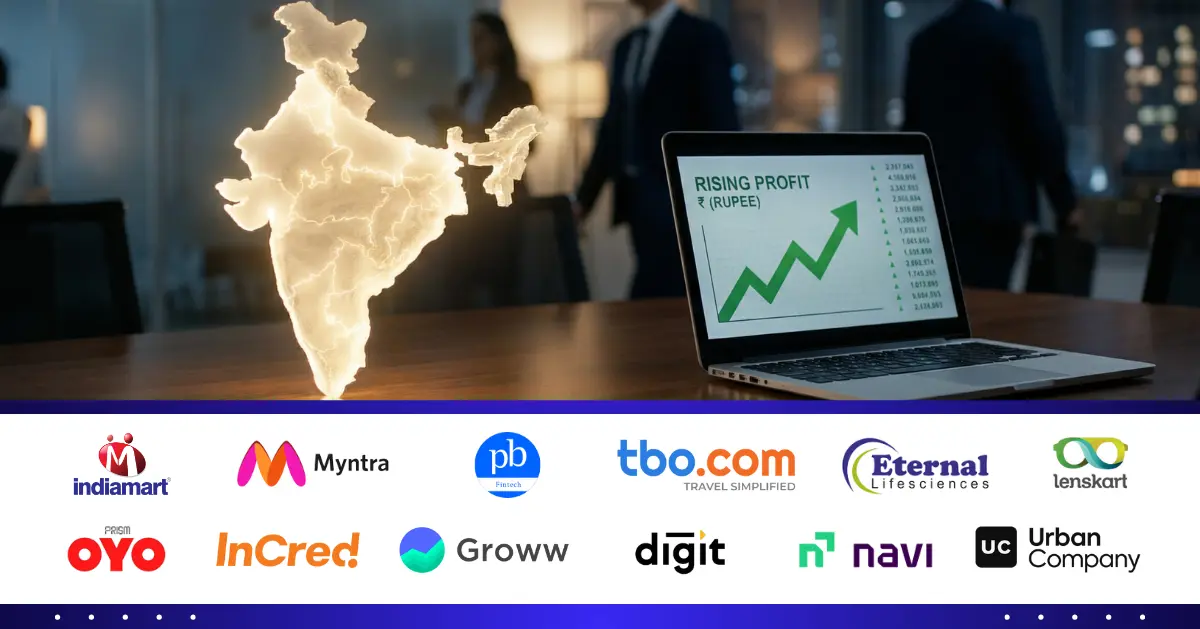
An Employee Stock Option Plan (ESOP) in India allows employees of Pvt. Ltd. Companies to buy shares at a fixed exercise price. An ESOP for a private company requires employees to “exercise” their options by paying the set price to convert them into actual shares.
This is popular among high-growth ESOP private companies that use ESOPs to attract talent and align employees with long-term success. Employees realize value when a liquidity event, such as an IPO, occurs, allowing them to sell their shares at a gain. ESOPs turn employees into shareholders, letting you share in the company’s success and shape its future alongside the founders.
In 2024–25, ESOP adoption in India surged, with 78% of startups offering ESOPs (up from 59% in 2021) and the median pool size rising to 12.6%. The number of issuing firms grew to 666 (vs. 299 in 2020), and startups issued over Rs. 10 trillion worth of ESOPs, highlighting their growing role in compensation and wealth creation.
Over 3,000 employees benefited from buybacks worth Rs. 1,450 crore, showing stronger liquidity opportunities.
What is an ESOP?
An ESOP lets employees buy a set number of company shares at a pre-determined exercise price. This is a powerful tool to attract and retain talent by giving employees a direct stake in the company’s success. ESOPs remain governed by the Companies Act, 2013, specifically Section 62(1)(b) and Rule 12 of the Companies (Share Capital and Debentures) Rules, 2014.
They are taxed in two stages: first as a perquisite at exercise, and later as capital gains on sale.
Participation in ESOPs is optional. Employees can choose to buy shares at a special price after a defined vesting period. Companies offer ESOPs to permanent employees, directors, or officers, excluding promoters or directors with over 10% equity.
How ESOPs Work in Indian Private Companies?
The process of implementing an ESOP for private companies is a structured one, governed by the Companies Act, 2013.
- Grant: The company grants employees stock options through a formal letter that specifies the exercise price and the vesting schedule.
- Vesting: Options vest over a defined period, meaning the employee earns the right to the options gradually. A 1-year cliff means no rights in the first year, then gradual vesting over 3–4 years.
- Exercise: Once options vest, the employee can choose to exercise them. This involves paying the pre-determined exercise price to convert the options into actual shares. At this stage, the employee incurs a tax liability. Tax liability is the total amount of tax an individual or business legally owes to the government.
- Liquidation/Exit: Employees realize real value when the company undergoes a liquidity event, such as a buyback or an acquisition.
Independent valuation of shares is crucial in private company ESOPs for tax compliance. For listed companies, SEBI regulations apply, but here we’re focusing on private companies and the post-incorporation certificate. Read more on our blog here.
Why do Companies Offer ESOPs?
Companies use ESOPs to attract talent, align interests with growth, and offer ownership, especially useful for startups to provide competitive pay without high cash salaries.
This helps attract top talent while aligning employees’ interests with the company’s long-term success.
ESOPs give employees a stake in the company’s equity and motivate them to work harder and more efficiently by tying their financial success to the company’s performance.
Advantages of Getting ESOPs
ESOPs provide several strategic benefits for both companies and employees:
- Attract and Retain Talent: ESOPs allow companies to attract top talent that might otherwise be out of their salary range.
- Align Incentives: By making employees shareholders, ESOPs directly link their financial success to the company’s performance, fostering commitment and productivity.
- Create an Ownership Culture: When employees feel like owners, they take greater pride in their work and are more invested in the company’s long-term success.
- Tax Deferral Advantage for Startups: Certain startup-friendly regulations allow employees to defer the payment of tax on ESOPs until the earlier of the sale of shares, the expiry of five years from exercise, or leaving the company. This eases the immediate cash flow burden on employees,
Disadvantages of Getting ESOPs
While ESOPs offer strong advantages in attracting talent and aligning employee interests with company growth, they also come with potential pitfalls.
- Dilution: Issuing new shares to employees can dilute the ownership of existing shareholders, including the founders.
- Valuation Disputes: Disagreements over valuation can lead to legal complications, particularly during an exit.
- Illiquidity: For private companies, shares are not easy to sell. Employees may hold options for years without being able to monetize them until a liquidity event occurs.
- Tax Burden on Employees: Employees may face a significant tax liability at the time of exercising their options, even before they are able to sell the shares and realize actual cash gains.
What is The Step By Step Guide To Setting Up An ESOP?
Setting up an ESOP for a private limited company in India is a structured process that requires careful legal and financial planning. Following a step-by-step approach is crucial to ensure compliance and a smooth implementation.
Step 1: Draft the ESOP Scheme for Private Companies
The first step is to create a detailed ESOP policy document that will serve as the blueprint for the entire plan.
- Define Objectives: Clearly state the purpose of the ESOP, whether it’s for talent retention, attracting key employees, or a strategic incentive.
- Determine Pool Size: Startups typically set aside 5–15% of company equity to determine the ESOP pool size.
- Outline Key Terms: The policy must specify the eligibility criteria for employees, the vesting schedule (e.g., a 4-year vesting with a 1-year cliff), and the exercise price of the options.
Step 2: Obtain Board and Shareholder Approval
The company’s key decision-makers must formally approve the draft ESOP scheme for private companies after preparation.
- Board Resolution: The Board of Directors must review and pass a resolution to approve the ESOP scheme.
- Special Resolution from Shareholders: Shareholders approve the scheme through a Special Resolution in a General Meeting. This ensures legal validity and transparency.
- Amend Articles of Association (AoA): If the company’s AoA does not permit the issuance of ESOPs, it must be amended before proceeding with the scheme.
Step 3: File with the Registrar of Companies (RoC)
After getting all the necessary approvals, the company must inform the RoC of its decision.
- File Form MGT-14: Within 30 days of passing the special resolution, the company must file Form MGT-14 with the RoC.
- Maintain Register SH-6: The company creates and maintains a Register of Employee Stock Options in Form No. SH-6 at its registered office. This register tracks all granted, vested, and exercised options.
Step 4: Grant Options to Employees
The company formally grants ESOPs to eligible employees once it completes all legal and compliance formalities. The grant letters issued must stay within the limits of the ESOP pool approved by the shareholders.
- Issuance of Grant Letters: The company sends formal grant letters to employees, detailing the number of options, vesting schedule, and exercise terms.
- Valuation: A registered valuer often conducts a valuation at the grant stage to determine the fair market value of shares, which is crucial for future tax calculations.
- Communicate with Employees: It’s vital to clearly communicate the ESOP plan to employees, explaining its benefits, how vesting works, and its potential for wealth creation.
Step 5: Administer and Track the ESOP
After granting the options, the company must have a system in place to manage the entire lifecycle of the ESOP.
- Track Vesting: The company needs to meticulously track the vesting of options for each employee according to the defined schedule.
- Handle Exercise Requests: When an employee decides to exercise their options, the company must process the request and allot the shares.
- Compliance and Reporting: The company must continuously ensure compliance with legal requirements and maintain records, as well as file Form PAS-3 with the RoC upon the allotment of shares.
Tax & Legal Considerations for ESOPs in India
Understanding the tax and legal landscape of ESOPs in India is crucial for both companies and employees. It’s a two-fold process, with specific rules governing both taxation and legal compliance.
Taxation of ESOPs
ESOPs are subject to tax at two stages in India, which can significantly impact an employee’s take-home earnings.
- Tax at Exercise: When employees exercise ESOPs, the employer treats the difference between the Fair Market Value (FMV) and the exercise price as a perquisite, taxes it as part of salary income, and deducts TDS under Section 192 of the Income Tax Act.
- Tax at Sale: Employees sell ESOP shares and calculate gains as the sale price minus the FMV at exercise. For unlisted shares, holding <24 months is short-term (taxed at slab rate), while holding ≥24 months is long-term (20% with indexation). For listed shares, holding <12 months is short-term (15% if STT paid), while holding ≥12 months is long-term (10% on gains above Rs. 1 lakh, without indexation).
- Startup Deferral: Employees of DPIIT-recognized startups can defer the perquisite tax that arises at the time of exercising ESOPs. They must still calculate and report the liability, but they can postpone the actual payment. The deferred tax becomes due within 14 days of the earliest of these events: completion of five years from exercise, sale of the shares, or termination of employment. This provides significant relief by easing the immediate cash burden.
Note: Taxation rules for ESOPs can be complex; it is advisable to consult a professional to understand your specific obligations and optimize tax planning.
Legal Considerations for ESOPs
The issuance of ESOPs is strictly governed by Indian corporate law to protect both the company’s and the employees’ interests.
- Governing Laws: ESOPs for private limited companies are governed by Section 62(1)(b) of the Companies Act, 2013, and Rule 12 of the Companies (Share Capital and Debentures) Rules, 2014.
- Shareholder Approval: Companies must get approval from their shareholders by passing a Special Resolution. The notice for this meeting must include an explanatory statement detailing the ESOP scheme.
- Eligibility & Restrictions: ESOPs can be granted to permanent employees and directors (excluding independent directors). Typically, they cannot be offered to promoters or directors who hold more than 10% of the company’s equity. However, an exception exists for DPIIT-recognized startups, which are allowed to grant ESOPs to such promoters for up to 10 years from the date of incorporation.
- Non-Transferability: The options granted under an ESOP are non-transferable and cannot be pledged, mortgaged, or assigned to any other person.
- Statutory Filings: The company must file Form MGT-14 with the Registrar of Companies (RoC) within 30 days of passing the special resolution and must also maintain a Register of Employee Stock Options (Form SH-6) at its registered office.
Frequently Asked Questions
Yes, a private limited company in India can definitely issue ESOPs. The process is fully governed by the Companies Act, 2013, and its rules. By following the prescribed procedures, these companies can legally grant stock options to their employees as a form of compensation and long-term incentive.




